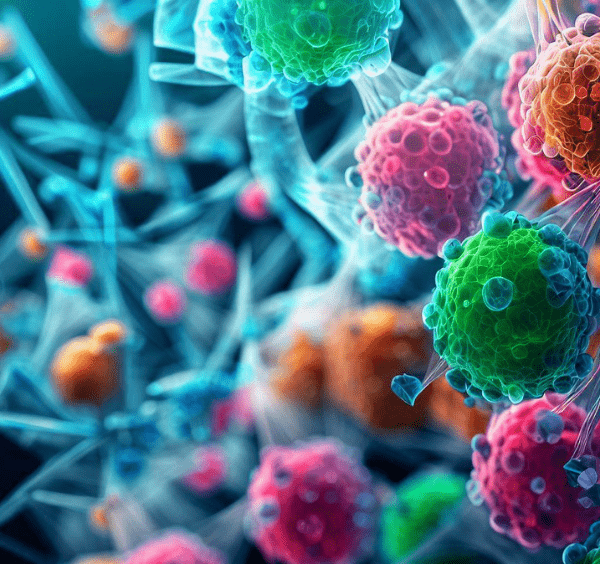
Cancer research is a field that continually seeks innovative approaches to enhance treatment outcomes and improve patients' lives. One such method is the use of Pretreated Patient-Derived Xenograft (PDX) models. In this article, we will explore the significance of pretreated PDX models in cancer research, their benefits, and the challenges faced in their development.
Understanding Pretreated PDX Models
Pretreated PDX models are a subset of patient-derived xenograft models treated with drugs or combinations before being transplanted into mice. This means the patient donating the original cancer sample had developed a natural drug resistance before the PDX model was developed. Once established, these models provide researchers with invaluable insights into drug resistance mechanisms and can identify potential drug combinations that may outperform existing treatments.
PDX models are remarkable tools used to study cancer. They involve transplanting fragments of human tumors directly into mice, which allows researchers to observe how the cancer behaves and responds to various treatments in a more realistic environment.
Take the PDX model and add a twist - "pretreated." This approach means that before transplanting the tumor into the mice, the tumor was exposed to specific drugs or drug combinations. Most PDX models are treatment naive, but pretreated models present an opportunity for researchers to mimic real-life scenarios where patients have received treatments before participating in clinical trials.
Pretreated PDX models are gaining traction because of their potential to unlock critical insights into drug resistance and treatment effectiveness. Through pretreated models, we can observe how drug resistant tumors respond, understand the underlying resistance mechanisms, and identify novel drug combinations that could overcome this resistance.
Improving Clinical Trial Success
A pressing concern in cancer clinical trials is the high failure rate due to ineffective drugs for specific patient populations. Pretreated PDX models present a solution by helping identify patients more likely to respond positively to certain drugs or drug combinations. Additionally, they aid in determining optimal dosages and treatment schedules, thereby increasing the success rate of clinical trials and accelerating the development of novel therapies.
This approach is precious for cancer clinical trials. Many trials fail because the drugs under investigation are ineffective for all patients since most patients are looking at 2nd and 3rd line solutions, having already developed resistance to primary treatments. But with pretreated PDX models, we can predict which drug resistant patients are more likely to respond positively to a specific drug or combination.
Benefits of Pretreated PDX Models
Uncovering New Drug Targets: By analyzing the responses of pretreated PDX models to different treatments, researchers can discover new drug targets, leading to the development of more effective 2nd and 3rd line medications..
Personalizing Cancer Treatment: The ability to study individual patient tumors in PDX models allows for personalized cancer treatment plans, tailoring therapy to each patient's unique characteristics and increasing the chances of successful outcomes.
Reducing Drug Development Costs: Implementing pretreated PDX models in early-stage drug testing can significantly reduce the cost of cancer drug development by filtering out ineffective compounds before moving to expensive human clinical trials.
Addressing Challenges in Development
While the potential of pretreated PDX models is promising, their development is not without challenges:
Standardization: Establishing reliable and reproducible methods for generating pretreated PDX models is essential for consistent and meaningful research outcomes.
Characterization of Changes: Researchers must develop robust methods to analyze the molecular and cellular changes that occur in PDX models after treatment, enhancing our understanding of treatment responses.
Translating to Human Patients: Bridging the gap between findings from PDX studies and human patients is critical to ensure that discoveries directly apply to clinical practice.
While pretreated PDX models provide valuable insights into drug responses and mechanisms of resistance, we must remember that mice are not humans. The tumor microenvironment in mice can differ from that in humans, and the immune system responses may also vary. Therefore, it is essential to carefully interpret and validate the results obtained from PDX studies before implementing them in human patients.
One way to bridge the gap between preclinical studies and human trials is through translational research. This research involves conducting further investigations using human samples and conducting clinical studies to validate the findings from PDX models. By doing so, we can ensure that the observations made in mice are relevant and applicable to the complex world of human cancer.
Another crucial consideration is the safety and efficacy of the treatments identified through pretreated PDX models. Even if a drug combination appears promising in mice, we must validate its safety profile and potential side effects in human clinical trials. Rigorous testing in human subjects must determine the correct dosages, treatment schedules, and possible interactions with other medications.
Pretreated PDX models represent a promising frontier in cancer research. Simulating real-life treatment scenarios in mice offers a glimpse into the complex world of drug resistance and effectiveness. With their potential to revolutionize clinical trials, identify personalized treatment options, and reduce drug development costs, the urgency to explore and refine these models is apparent.
Pretreated PDX models hold immense potential in transforming cancer research and treatment strategies. By understanding drug resistance mechanisms and identifying effective therapies for specific patient populations, these models can revolutionize cancer care and significantly impact patients' lives. While challenges exist, the ongoing research in this area offers hope for a brighter future in the fight against cancer. As we continue to innovate and refine these models, the urgency to embrace and invest in pretreated PDX models grows, taking us one step closer to conquering cancer.
LIDE delivers innovations in oncology translational research and immuno-oncology. Contact Global Vice President, Josh Caggiula today to learn more about our first-class research capabilities.